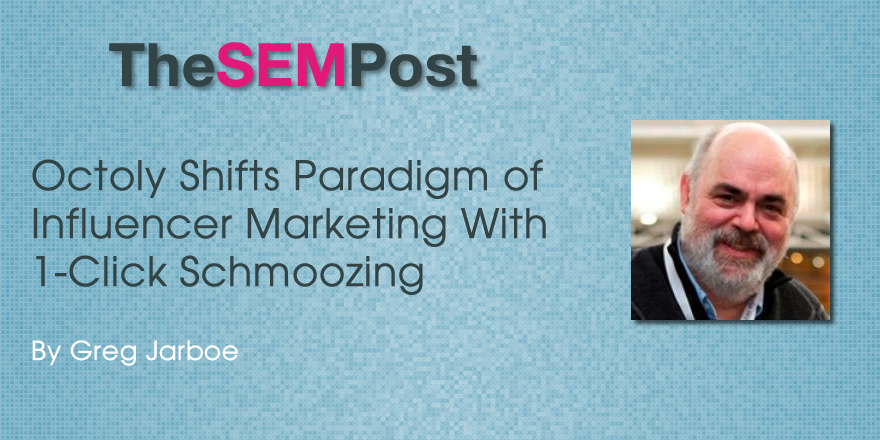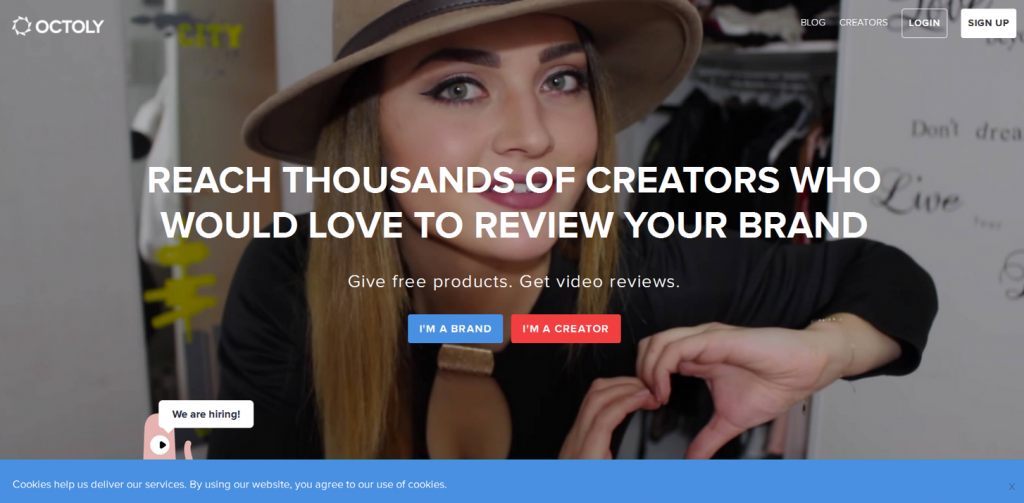 On Thursday, Oct. 20, I’m speaking about “Schmooze Optimization” at the third annual VidSummit in Los Angeles. If you’ve never heard of the concept of optimized schmoozing, it’s something that I talked about four years ago at SES San Francisco 2012. It is “the process of making casual conversation with influential individuals who can help you to increase views, improve engagement, and boost earnings of your YouTube channel.”
On Thursday, Oct. 20, I’m speaking about “Schmooze Optimization” at the third annual VidSummit in Los Angeles. If you’ve never heard of the concept of optimized schmoozing, it’s something that I talked about four years ago at SES San Francisco 2012. It is “the process of making casual conversation with influential individuals who can help you to increase views, improve engagement, and boost earnings of your YouTube channel.”
Now, the term, schmooze optimization, never caught on. Most of the world calls the concept that I was talking about “influencer marketing.” And at VidSummit, I was planning to discuss the three main challenges facing marketing and communications professionals worldwide when they roll out an influencer engagement strategy:
- Identify the right influencers.
- Find the right engagement tactics.
- Measure the performance of your programs.
Get it? Got it? Good.
Then, I was given a heads up about an announcement by a company based in Paris that totally blew away two-thirds of what I was planning to present. Now, I’m no stranger to paradigm shifts. In this industry, they happen every 18 months. But, do they have to arrive just a couple of weeks before I’m expected to share exclusive information to keep to the digital video industry’s top creators, marketers, and brands current and competitive in an ever-changing market?
Aargh!
Sorry, I had to get that out of my system. So, what’s the name of this company? And what are they doing that radically shifts the paradigm of influencer marketing?
Well, the company is Octoly. It’s the first micro-influencer marketing platform where up-and-coming creators can get free products from the world’s leading brands, which allows them to provide unbiased and authentic reviews on YouTube and Instagram. At the same time, Octoly helps brands identify and activate micro-influencers at scale. Octoly manages thousands of creators along with brand customers such as L’Oréal, Estée Lauder, Sephora, Urban Decay, Birchbox, and Clarins.

Now, I already knew that influencers like Michelle Phan were reshaping the fashion and beauty industry. And according to Patricio Robles, a tech reporter at Econsultancy, a growing number of brands are looking to micro-influencers, social media users without massive followings but who might be able to deliver better results with the right strategy.
But, legacy models for well-known influencers, like Multi-channel networks (MCNs), don’t scale and just can’t support the needs of vast numbers of micro-influencers. And most rising creators can’t connect with brands because those brands simply have no means to effectively identify and activate this massive, long-tail community of emerging creators at scale.
These are the problems that Octoly solves.
It gives influencers access to a marketplace, akin to a store from Amazon or Alibaba that’s free, where creators can choose all the beauty products they want to feature for their next YouTube or Instagram review. These up-and-coming micro-influencers are neither paid nor bound by brand guidelines, allowing them complete journalistic freedom.
According to Katie Legate, creator and owner of the Katie Legate channel on YouTube, “I just love receiving alerts about new products from Octoly. I especially like being able to choose which ones to review without any pressure or constraints.” She adds, “Octoly makes it a dream for me to share my passion so easily while allowing me to connect with the brands I love. I also appreciate the freedom to give my personal opinions, which is exactly what my fans want: 100-percent honesty.”
And here’s what Kelsie Hornberger, the creator of the Kelsie’s Closet channel on YouTube, has to say about Octoly: <iframe width=”560″ height=”315″ src=”https://www.youtube.com/embed/xsOEH2Trnus” frameborder=”0″ allowfullscreen></iframe>
And, according to Jill Pauley, Director of Online Marketing for Los Angeles-based professional hair care brand Sexy Hair, “Brands need relevant video content. With the increase of videos appearing in organic search results, the importance of peer-to-peer reviews and YouTube being the second largest search engine in the world, brands can’t afford to sit idly by with fingers crossed, hoping that their products are reviewed by vloggers.” She adds, “Octoly helps brands access influencers who are relevant to their brand and build relationships with them.”
Octoly began in Paris, the world’s fashion and beauty capital, and quickly expanded to the U.S. The company plans to expand to other European countries starting with Spain. The company continues to expand its platform beyond YouTube to Instagram and other social networks. And its marketplace is expanding, too, with micro-influencers and brand products in the gaming category.
After entering the market in both France and the United States in 2015, Octoly, announced on Tuesday, Sept. 27, 2016, that it had reach the following milestones:
- 2,400 registered beauty influencers, of which more than 60% are active.
- 85% market penetration among beauty YouTubers in France.
- 120 beauty brands supplying products to creators.
- 22,000 objective and independent product reviews over the last year.
- 80% quarter-to-quarter growth in product reviews.
According to Thomas Owadenko, the Co-Founder and CEO of Octoly, “My ambition with Octoly is that all beauty and fashion influencers of the world on YouTube, Instagram and other social platforms get free products to review on their social networks. We want to unleash the power of passion for thousands of creators worldwide.” He adds, “We are more than a new marketing technology company because we are delivering an experience and creating a unique community of women influencers. By getting free products and not being paid, creators keep their authentic voice. Our unique positioning is not only disrupting the influencer marketing space, but also all marketing because we’re giving the opportunity to these new creatives to work without any brief from brands”.
In other words, Octoly is shifting the paradigm of influencer marketing by offering the equivalent of 1-click schmoozing. And this means I’ve got to go back and totally revise two-thirds of my presentation for VidSummit. Hey, if this wasn’t an ever-changing market, then I could continue talking about MySpace Videos, Google Video, and Yahoo! Video. They were YouTube’s primary competitors – a decade ago.
Greg Jarboe
Latest posts by Greg Jarboe (see all)
- Recreating Viral Video Success: Squatty Potty - October 20, 2017
- Baby Boomers are the Audience Most Advertisers are Missing on YouTube - September 19, 2017
- KnowledgeVision’s Knovio 3.0 is Not Your Old School Online Video Platform - June 30, 2017
- Top 10 Super Bowl Ads for 2017 Depend on Which Metrics You Use - February 7, 2017
- Only 10% of Viewers Thought Last Year’s Super Bowl Ads Were Funny - January 17, 2017